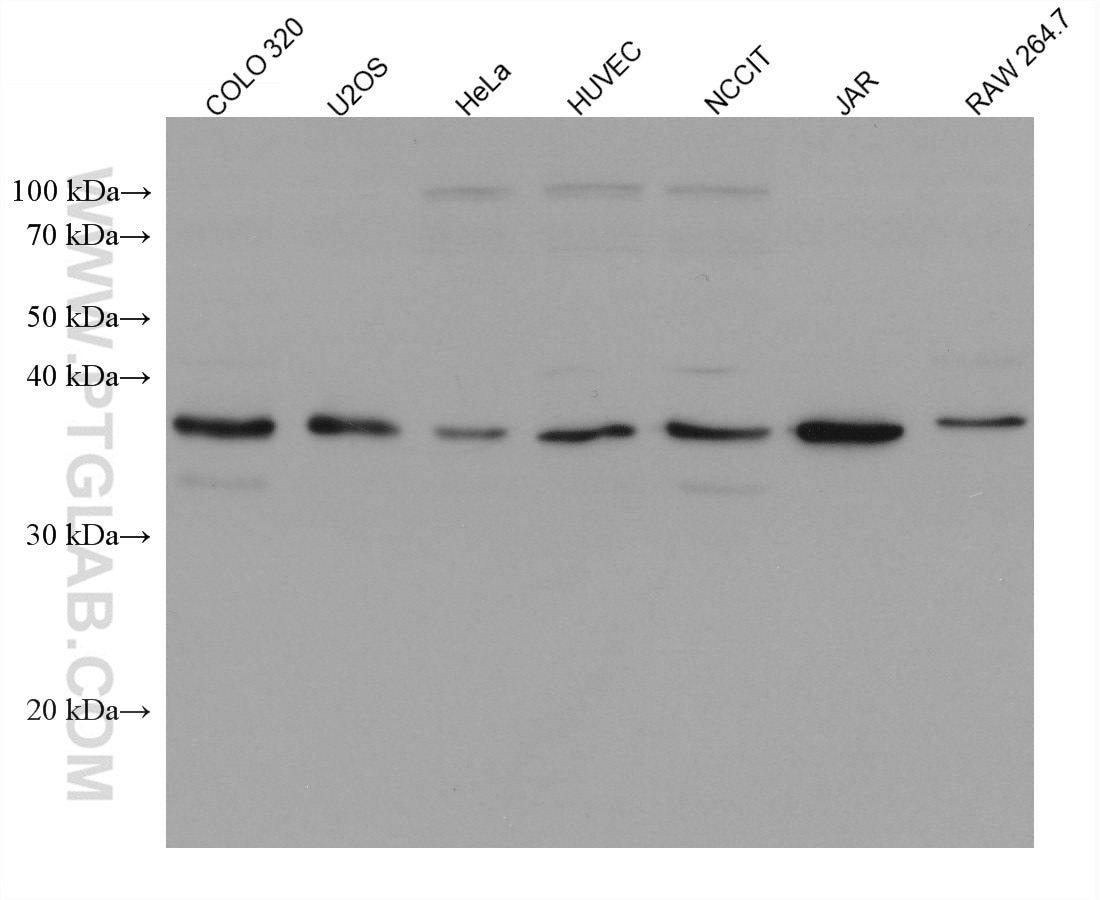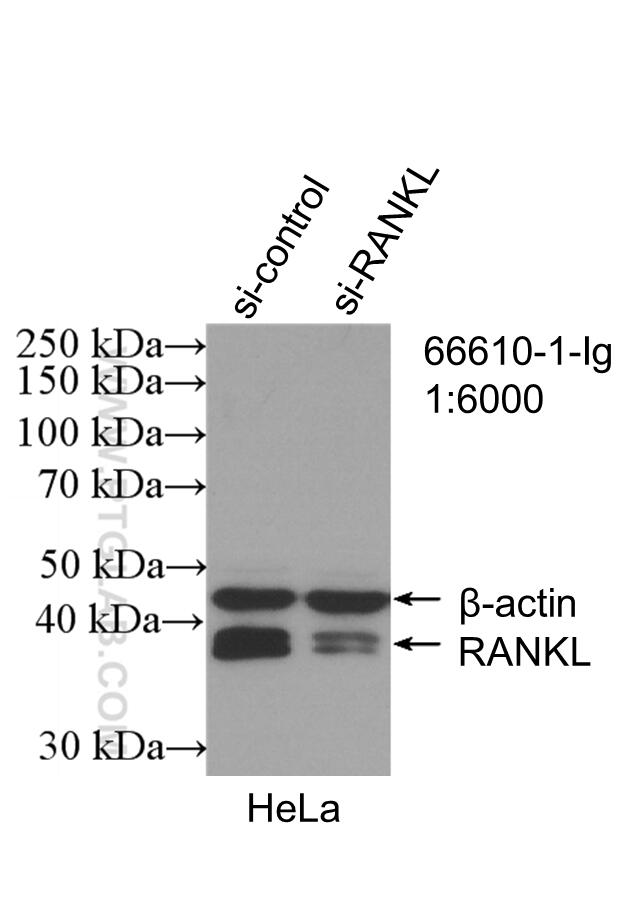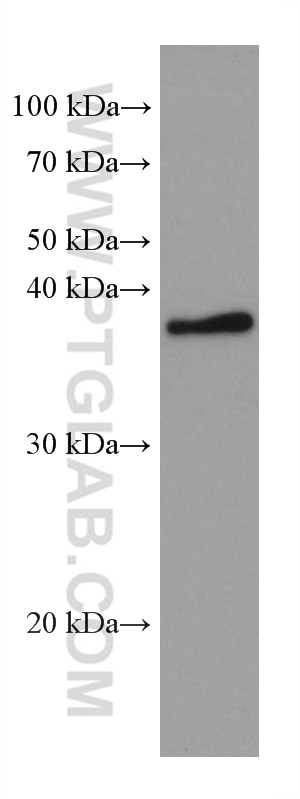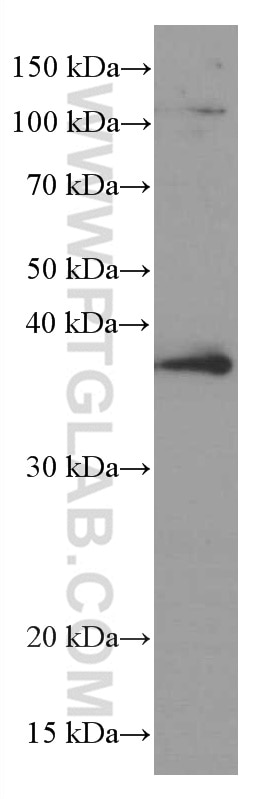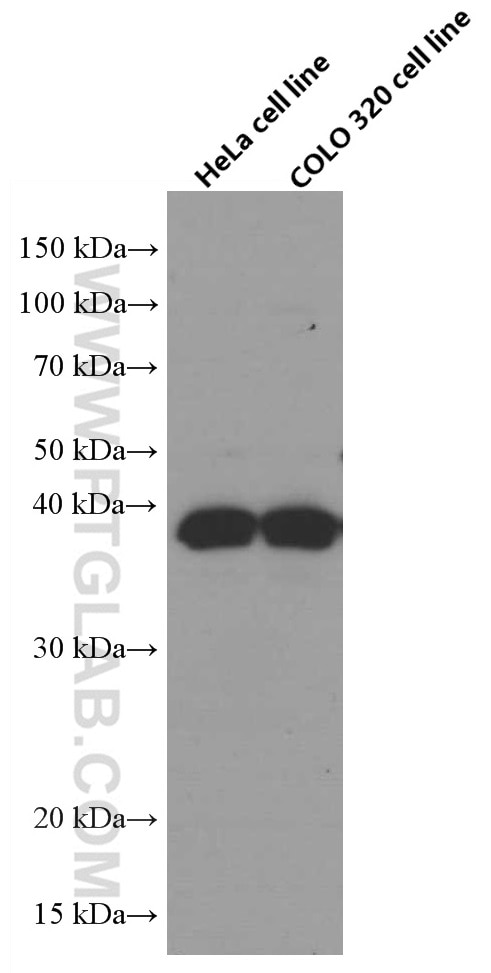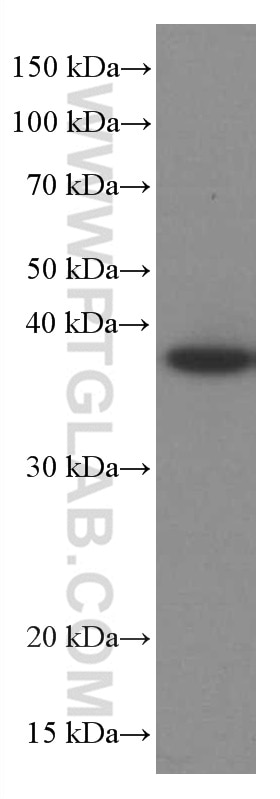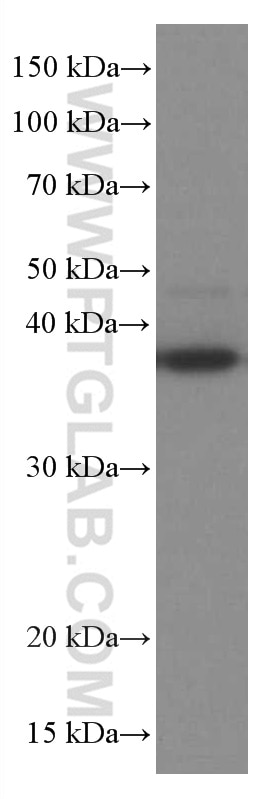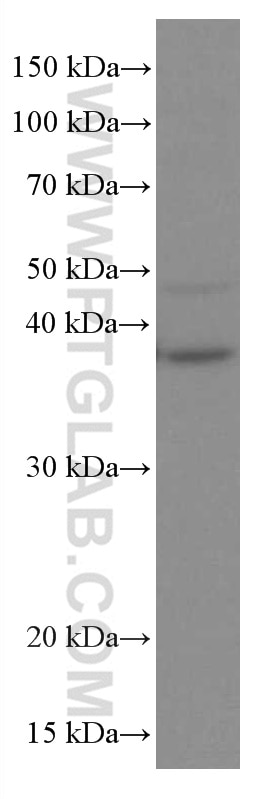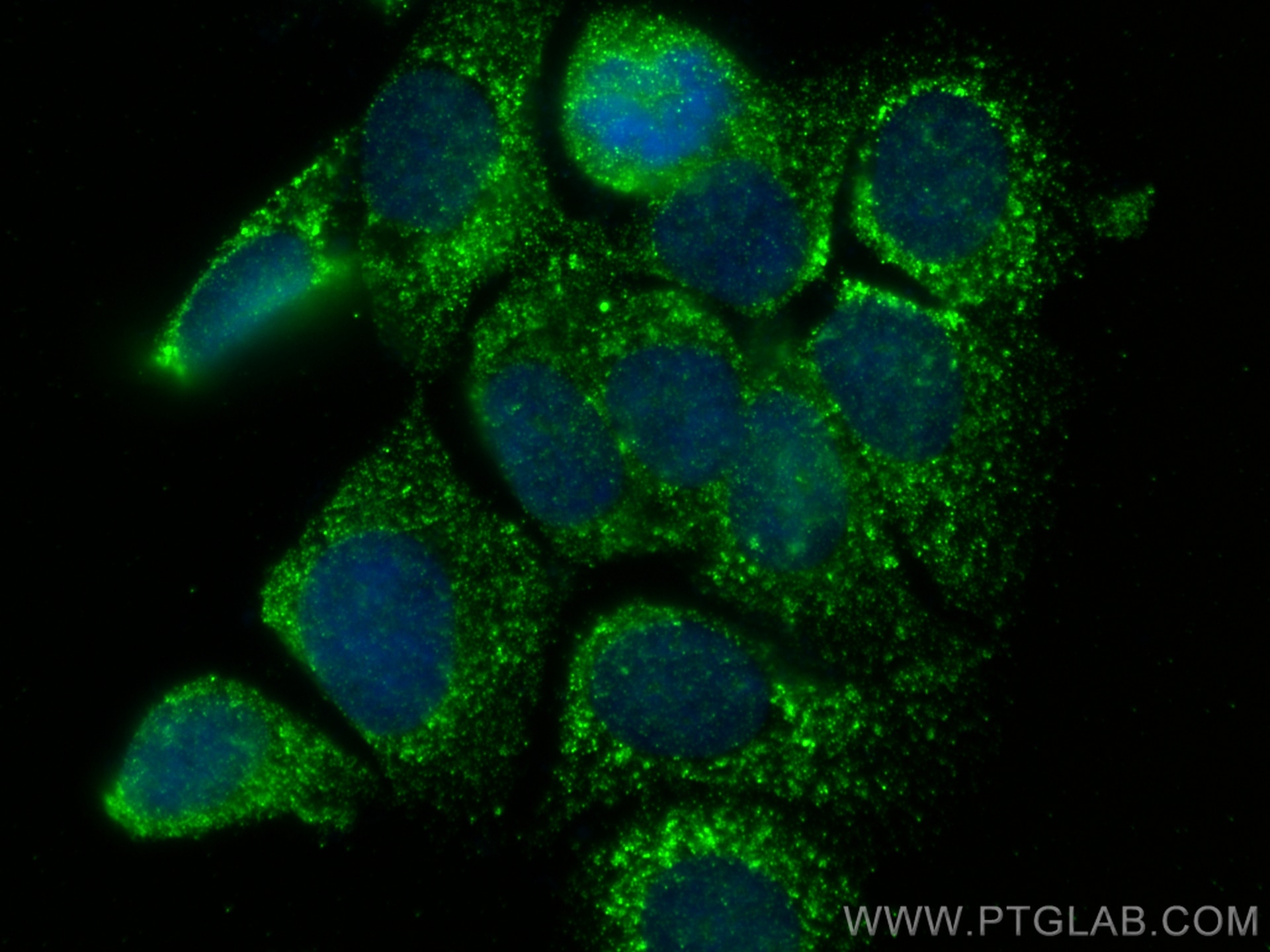- Featured Product
- KD/KO Validated
TNFSF11/RANKL Monoklonaler Antikörper
TNFSF11/RANKL Monoklonal Antikörper für WB, IF/ICC, ELISA
Wirt / Isotyp
Maus / IgG1
Getestete Reaktivität
human, Maus, Ratte
Anwendung
WB, IHC, IF/ICC, ELISA
Konjugation
Unkonjugiert
CloneNo.
3F2E1
Kat-Nr. : 66610-1-Ig
Synonyme
Geprüfte Anwendungen
| Erfolgreiche Detektion in WB | COLO 320-Zellen, DC2.4-Zellen, HeLa-Zellen, humanes Milzgewebe, HUVEC-Zellen, JAR-Zellen, NCCIT-Zellen, RAW 264.7-Zellen, U2OS-Zellen |
| Erfolgreiche Detektion in IF/ICC | MCF-7-Zellen |
Empfohlene Verdünnung
| Anwendung | Verdünnung |
|---|---|
| Western Blot (WB) | WB : 1:2000-1:10000 |
| Immunfluoreszenz (IF)/ICC | IF/ICC : 1:400-1:1600 |
| It is recommended that this reagent should be titrated in each testing system to obtain optimal results. | |
| Sample-dependent, check data in validation data gallery | |
Veröffentlichte Anwendungen
| WB | See 9 publications below |
| IHC | See 4 publications below |
| IF | See 4 publications below |
Produktinformation
66610-1-Ig bindet in WB, IHC, IF/ICC, ELISA TNFSF11/RANKL und zeigt Reaktivität mit human, Maus, Ratten
| Getestete Reaktivität | human, Maus, Ratte |
| In Publikationen genannte Reaktivität | human, Maus, Ratte |
| Wirt / Isotyp | Maus / IgG1 |
| Klonalität | Monoklonal |
| Typ | Antikörper |
| Immunogen | TNFSF11/RANKL fusion protein Ag19975 |
| Vollständiger Name | tumor necrosis factor (ligand) superfamily, member 11 |
| Berechnetes Molekulargewicht | 317 aa, 35 kDa |
| Beobachtetes Molekulargewicht | 35-38 kDa |
| GenBank-Zugangsnummer | BC074890 |
| Gene symbol | RANKL |
| Gene ID (NCBI) | 8600 |
| Konjugation | Unkonjugiert |
| Form | Liquid |
| Reinigungsmethode | Protein-G-Reinigung |
| Lagerungspuffer | PBS with 0.02% sodium azide and 50% glycerol |
| Lagerungsbedingungen | Bei -20°C lagern. Nach dem Versand ein Jahr lang stabil Aliquotieren ist bei -20oC Lagerung nicht notwendig. 20ul Größen enthalten 0,1% BSA. |
Hintergrundinformationen
TNFSF11 also known as RANKL, is a member of the tumor necrosis factor (TNF) cytokine family which is a ligand for osteoprotegerin and functions as a key factor for osteoclast differentiation and activation. RANKL is a polypeptide of 217 amino acids that exerts its biological activity both in a transmembrane form of about 40-45 kDa and in soluble one of 31 kDa (PMID: 15308315). The membrane-bound RANKL (mRANKL) is cleaved into a sRANKL by the metalloprotease-disintegrin TNF-alpha convertase (TACE) or a related metalloprotease (MP). RANKL induces osteoclast formation through its receptor, RANK, which transduces signals by recruiting adaptor molecules, such as the TNF receptor-associated factor (TRAF) family of proteins. RANKL was shown to be a dentritic cell survival factor and is involved in the regulation of T cell-dependent immune response. T cell activation was reported to induce expression of this gene and lead to an increase of osteoclastogenesis and bone loss. RANKL was shown to activate antiapoptotic kinase AKT/PKB through a signaling complex involving SRC kinase and tumor necrosis factor receptor-associated factor (TRAF) 6, which indicated this protein may have a role in the regulation of cell apoptosis.
Protokolle
| PRODUKTSPEZIFISCHE PROTOKOLLE | |
|---|---|
| WB protocol for TNFSF11/RANKL antibody 66610-1-Ig | Protokoll herunterladen |
| IF protocol for TNFSF11/RANKL antibody 66610-1-Ig | Protokoll herunterladen |
| STANDARD-PROTOKOLLE | |
|---|---|
| Klicken Sie hier, um unsere Standardprotokolle anzuzeigen |
Publikationen
| Species | Application | Title |
|---|---|---|
J Cancer Gut microbiota deficiency ameliorates multiple myeloma and myeloma-related bone disease by Th17 cells in mice models | ||
Folia Histochem Cytobiol Platelet-rich plasma ameliorates cartilage degradation in rat models of osteoarthritis via the OPG/RANKL/RANK system | ||
Cell Death Dis RANK promotes colorectal cancer migration and invasion by activating the Ca2+-calcineurin/NFATC1-ACP5 axis. | ||
Open Life Sci Effect of periostin on bone metabolic and autophagy factors during tooth eruption in mice | ||
Adv Healthc Mater Structured Polymers Enable the Sustained Delivery of Glucocorticoids within the Intra-Articular Space | ||
Poult Sci Zinc Glycine supplementation improves bone quality in meat geese by modulating gut microbiota, SCFA's, and gut barrier function through Wnt10b/NF-κB axis |
